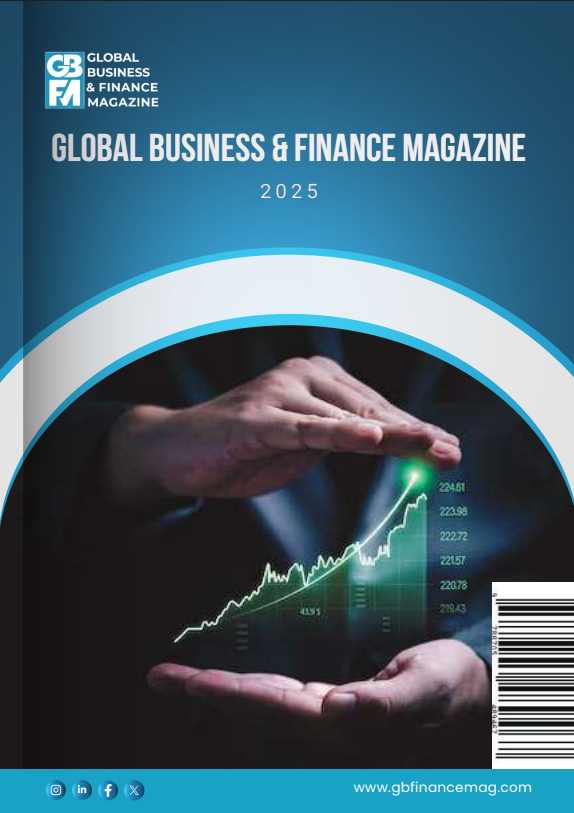True economic power lies not only in what a country gains from trade, but also in how much it contributes to the prosperity of others. This column introduces the ‘trade benefit ratio’, which captures the total economic loss a country’s withdrawal from global trade would cause others relative to the self-inflicted economic loss. It shows that there is substantial heterogeneity in the ratio across countries, sectors, and trading partners. The metric provides a new lens that reveals the underlying landscape of global economic and geopolitical power.
While globalisation has increased productivity and incomes around the world, extensively linked value chains have introduced new vulnerabilities (Baldwin et al. 2023). ‘Geoeconomics’ — in which a country uses its economic strength to exert influence on foreign entities to achieve geopolitical or economic goals — has become more prominent, especially since US President Donald Trump took office. Tariff threats have increasingly entered the geopolitical toolkit, and global leaders have even contemplated ‘Cold War 2.0’ scenarios, in which a Western bloc decouples from a China-aligned bloc (Gopinath 2023).
Against this backdrop, there has recently been a resurgence of academic work studying geoeconomics, with a focus on using economic theory and trade data to understand and quantify the sources and consequences of geopolitical power and conflict. See, for example, the survey of Mohr and Trebesch (2025).
A central element of geoeconomics and theories of national power is the comparison between (i) the damage that the government of one country can impose on another country and (ii) the loss that the aggressor would incur (Hirschman 1945, Keohane and Nye 1977). Theorists have long conjectured that countries with the capacity to inflict disproportionate disruption relative to self-cost are uniquely positioned to exert geopolitical pressure or extract concessions through economic policy.
To escape or mitigate coercion, one must first identify the extent and sources of national economic power. But how can we measure coercive capacity, vulnerability to coercion, and potential to escape coercion? Our new paper (Gersbach et al. 2025) takes up this task by introducing a new approach to determining the extent to which countries benefit others — or acquire geopolitical leverage — through international trade.
Measuring a nation’s value to others and the trade benefit ratio (TBR)
We develop the trade benefit ratio (TBR), a new metric for measuring the geoeconomic significance of nations through their trade relationships. This metric offers a simple aggregate measure of how much systemic value a country provides to others via international trade, relative to how much it receives. Using our model of global trade networks, which is informed by recent data describing trade linkages across countries and industries, we calculate the TBR as the ratio between the total economic loss a country’s withdrawal from global trade would cause others and the self-inflicted economic loss.
A high TBR value indicates the potential for geopolitical leverage, as it implies that the country can threaten to inflict high costs on others through trade barriers without risking much itself. A low TBR suggests the country generates relatively little foreign value through trade relative to what it gains itself. A low TBR potentially limits the extent to which a country can make credible threats in trade wars.
Armed with our metric, we ask: which countries generate the most relative economic value for others, and which generate the least? Which countries provide external value through manufacturing, and which through services? Do high TBR countries provide value for many other economies, or does their influence stem from a small set of close trade partners?
A global model of trade interdependence and its calibration
In the model, each country is populated with both consumers and firms from many sectors, spanning manufacturing, services, agriculture, and mining. In addition to hiring labour, firms produce output using intermediate goods from both domestic and foreign firms. The model features a rich trade network, where the production of any firm relies on inputs from many others, which in turn source inputs globally. Our framework yields a global general equilibrium model in the sense that we calculate and analyse the situation in which consumers and firms are rationally optimising, subject to trade barriers, and global markets clear (supply equals demand in all markets).
The implications of the model depend on the values of its underlying parameters, which represent, for example, heterogeneity in the firms’ or consumers’ preferences for goods of different origins. To calibrate the model — that is, choose empirically plausible parameters — we rely on two sources. First, we use the 2019 input-output table from the Organisation for Economic Co-operation and Development (OECD 2023). The table provides the nominal sales of each industry in each country to all other industries in all other countries, as well as sales for final uses (e.g. consumption or investment) around the world. The entries in the table include, for example, the 2019 sales of the Swiss chemical sector to both the rubber/plastics industry in Germany and consumers in the US. Second, for the remaining elasticity parameters that govern substitutability (e.g. the extent to which consumers trade off food and service spending), we use estimates from the prior literature.
The calibrated model features 34 countries/regions and 38 industries per country/region, ranging from fishing and aquaculture to basic metals manufacturing and financial services. We calculate the TBRs as follows. First, one country at a time, we prohibitively restrict the imports and exports of the country in question. Second, we calculate the welfare losses for that country, as well as the total losses for everyone else, using a money-metric measure that converts the changes in well-being into a common monetary unit. Third, we compute the country’s TBR as the losses suffered by everyone else divided by the domestic welfare loss. We consider three different versions of TBRs: (1) trade barriers apply to all sectors; (2) trade is only restricted for manufacturing and services (and not for agriculture and mining); and (3) trade is only restricted for manufacturing sectors (maintaining free trade in services, agriculture, and mining).
Who generates the most value for others relative to their own gain?
Figure 1 shows TBR rankings according to the quantitative model. The top panel assumes that trade barriers apply to all sectors, the middle panel excludes agriculture and mining from the barriers, and the bottom panel blocks trade only in the manufacturing sectors. For the headline ‘All Sectors’ TBR, the top individual (non-aggregated) economies are the US, the UK, China, and Indonesia, and the US is a noticeable outlier, with a TBR close to one. At the bottom end are Japan and Korea, with TBRs around 0.2. In the ‘Only Manufacturing and Services’ case, the TBR of the US even rises above one. This suggests that the US has more leverage in manufacturing and services and relatively less in agriculture and mining. The ‘Only Manufacturing’ case, which preserves free trade in agriculture, mining, and services, has a larger effect on the levels and ordering of TBR. India, for example, rises substantially, suggesting that its relative value stems more from manufacturing. On the other hand, TBRs fall significantly in several economies, the UK and Switzerland for example, suggesting major contributions to the TBR stemming from trade in services. Comparing across the three cases, some countries appear to have TBRs that are more evenly distributed across sectors, such as China and Indonesia.
Figure 1 The trade benefit ratio (TBR) in a quantitative model


Note: ‘ROE’ means Rest-of-EU, ‘LAA’ is a subset of Latin American economies, ‘EAA’ is a subset of East Asian economies, ‘AFR’ is a subset of African economies, and ‘ROW’ means Rest-of-World. ‘Only Manufacturing and Services’ excludes ISIC codes A and B (agriculture, forestry, fishing, and mining) from trade barriers, and ‘Only Manufacturing’ includes the C codes only. See Gersbach et al. (2025) for a full description of the countries, regions, and sectors.
In Gersbach et al. (2025), we also decompose each country’s TBR with respect to the foreign countries it affects when disconnecting from trade and uncover several interesting patterns. First, China, Germany, and the US are exposed to many other countries, that is, they benefit from a large number of different trade relationships. In contrast, some countries, especially Australia and Mexico, benefit from trade with relatively few countries. Second, Australia, Canada, Norway, Russia, and Saudi Arabia often benefit from other countries leaving trade, possibly due to their richness in natural resources. Third, some countries (e.g. Mexico) have very concentrated TBRs in the sense that relatively few other countries are affected when they disconnect. Other countries, like the UK, have dispersed TBRs, meaning they benefit many different countries by engaging in trade. Formally defining and calculating a TBR concentration index, Gersbach et al. (2025) find the highest numbers in Canada and Mexico, indicating that their value for others stems from a small number of trade partners. Denmark and the UK, which have the lowest concentration indexes, benefit many other economies through trade.
A new lens on global power
While the results in Figure 1 account for nonlinearities, general equilibrium effects, and the richness of the observed input-output tables for dozens of countries and sectoral supply chains, our analysis nevertheless abstracts from many other important aspects of economic power, including intertemporal dynamics, financial markets, and foreign direct investments. Thus, transitioning from one configuration to another entails substantial economic costs. For example, in our ‘All Sectors’ ranking, the US comes out on top with a high level of TBR. Yet, a substantial fraction of US consumption is effectively financed by foreign private investors and public authorities, such as central banks, as the US has a persistently large trade deficit. Suitable extensions of our measure would ideally account for cross-border trade in assets, the role of reserve currencies, foreign direct investments, financial markets in general and the important so-called second-layer effects. Yet, trade in goods and services is the starting point and conceivably the most important part of how nations benefit from each other.
To sum up, the trade benefit ratio provides a novel lens on the economic value nations create for others through trade, with clear implications for policy and ample scope for future work.
Source : VOXeu



































































